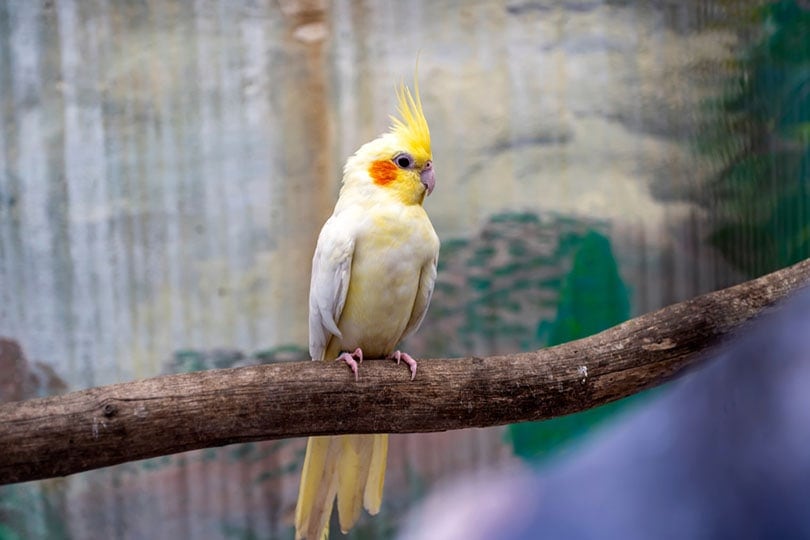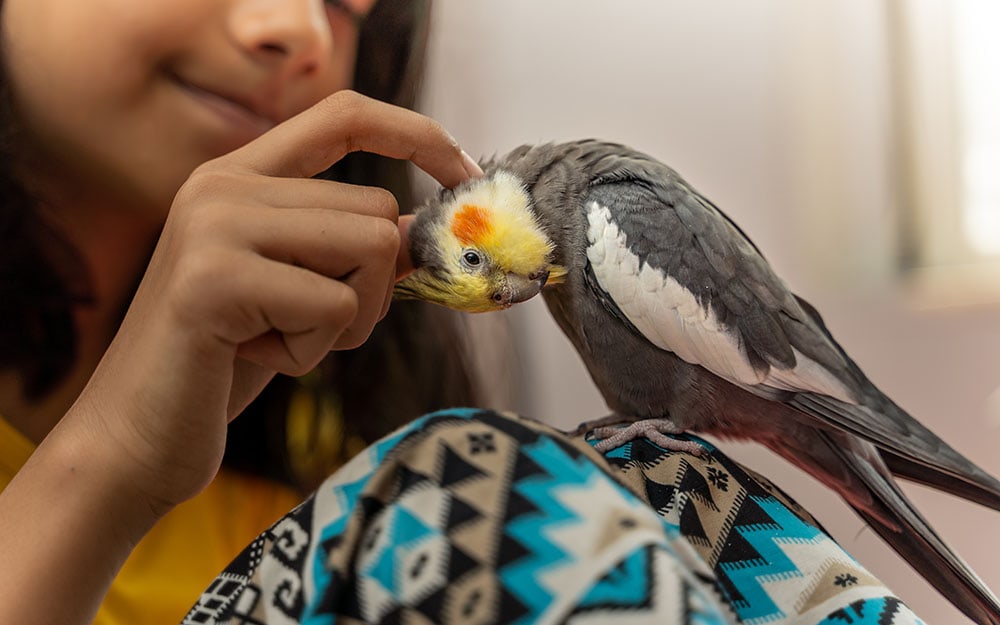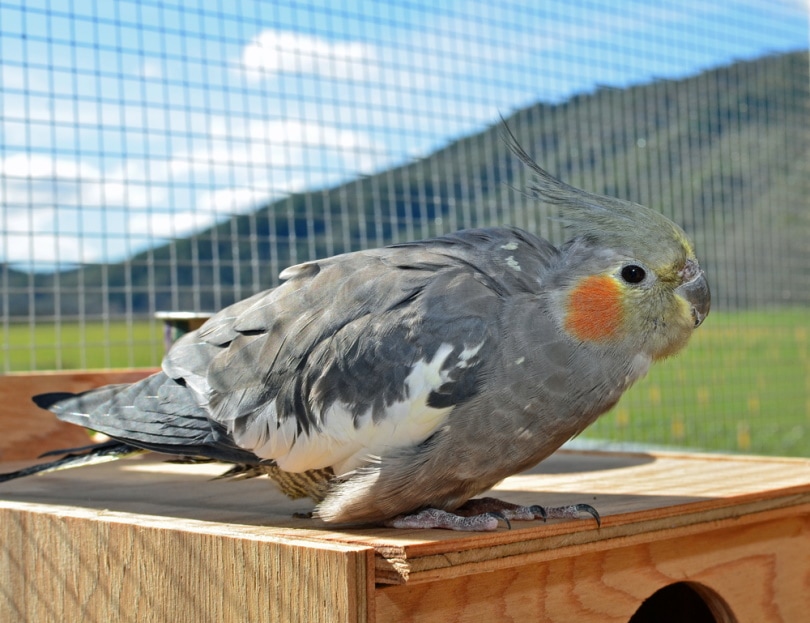Cockatiel Body Language: 15 Crucial Cues to Look For

Updated on

They might not be able to talk, but Cockatiels have many ways to communicate a message to you, beyond whistling, clicking, and squawking. They can be very expressive little birds, and while every bird is unique and may display different body language quirks, some actions generally mean the same thing in most Cockatiels. Over time, you will get used to the mannerisms and movements of your Cockatiel but you can use the 15 body language cues below as a guide to help.
The 15 Most Crucial Cockatiel Body Language Cues
1. Wagging Tail
Most animals that have tails use them to give some information about their mood and current state of mind. Similar to dogs, Cockatiels usually wag their tails from side to side, or bob them up and down, when they are happy.
2. Fanning the Tail
Tail fanning is usually a sign that the bird is trying to attract a potential mate, but it may also do this to show you how much it appreciates you. Tail fanning is normally accompanied by a spreading of the wings and a cresting of the head feathers, making the Cockatiel appear larger than it is.

3. Wing Flapping
Another reason your Cockatiel might try to appear larger is to scare away potential predators, even if there aren’t any. Flapping the wings, while staying perched on a perch, may be a sign that your Cockatiel is angry. If you are approaching the bird when it starts this behavior, it may be a sign that it really doesn’t want to be disturbed.
4. Hanging Upside Down
Hanging upside down from a high perch is usually a good indication that a Cockatiel is trying to defend its territory and feels that it is under threat. Some Cockatiels will also hang upside down when playing, though, showing the importance of context.
5. Approaching You
If your Cockatiel walks towards you when you approach, it could be a positive sign, but only if it looks relaxed and happy. If it has its head down, it might want the back of its neck scratching and is approaching in the hope of getting this attention. If a Cockatiel approaches with its tail fanned and wings spread, it might be a sign of aggression.

6. Dilating Pupils
The eyes of a Cockatiel can give much away. Quickly dilating pupils could be a sign that the bird is getting angry. If you’re playing a game or doing anything else interactive with the bird, this is a good sign that you are not playing the game how your feathered friend wants you to.
7. Head Movements
Cockatiels do like to bob and move their head to the sound of their own music, but they also move their head for other reasons. Slowly moving its head from side to side can be an indication that the bird wants your attention. It could be time to play, time to feed, or it might just be time to spend some time with your Cockatiel.
8. Hopping
Hopping up and down on the spot or gradually across a platform can be a sign that your Cockatiel is really happy to see you. It may be looking for attention, too, and while it is nice that your bird wants attention from you, it may be a sign that it needs more enrichment in its life.

9. Snapping
Snapping, or lunging and attempting to bite at you, is a pretty good indication that you are doing something that irks your bird or that you need to give it some time and space. While there might be occasions not to ignore this, it is best to leave your Cockatiel alone when it’s in this kind of mood.
10. Beak Banging
Beak banging is another method that Cockatiels use to get attention. They will bang their beak against the bars of the cage or against pretty much anything else that makes an audible noise. They may stop when they get attention or they may carry it on because it’s fun.
11. Head Down
If a Cockatiel has its head down towards you, you will need to consider other cues to determine what it means. If the feathers are puffed out or the pupils are dilated, it is likely a sign of aggression, and you may want to stop whatever you are doing. If it looks generally relaxed and happy, it is more likely to mean that the Cockatiel wants the back of its neck and head scratched.

12. Ruffled Feathers
Ruffling its feathers is a good way for a Cockatiel to appear bigger, which is something that it will do when trying to get you to leave it alone. It is a sign of aggression or a warning, and it may be accompanied by dilated pupils and other signs of aggression.
13. Feather Plucking
Feather plucking means that the Cockatiel is plucking its feathers out, typically using its beak to just pull them. This can be a sign of disease but it can also occur when a Cockatiel is bored and has become depressed as a result of its boredom. Ensure there are plenty of toys in the cage and that you are letting your Cockatiel out for an adequate amount of time every day.
14. Sitting
Sitting, rather than perching, may be a sign that your bird is ill or feeling under the weather. The sitting position is different from perching and you might find your bird sitting at the bottom of the cage or hunched up in a sitting position on its perch.

15. Preening Feathers
Preening is a natural behavior that all birds undertake. It helps remove the dust and dirt from feathers and keeps them in top condition. If accompanied by actions like fluffing its feathers, it may be a sign that your bird is pleased to see you and is looking forward to your company.
Conclusion
Cockatiels are intriguing, fun, and affectionate little birds that typically enjoy spending time with their humans and providing plenty of entertainment for the whole family. They do have a variety of ways in which they show their emotions and general well-being, and you will learn to recognize these over time, but above we have given 15 body language cues that you can keep an eye out for to help better understand your beautiful bird.
Featured Image Credit: ONGUSHI, Shutterstock











